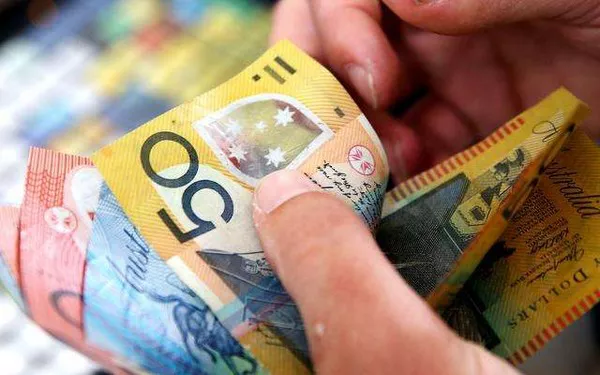Foreign exchange (Forex or FX) trading is a complex and dynamic market where currency values are constantly fluctuating based on various economic, political, and market factors. One of the most common activities for forex traders is converting one currency into another for either speculative purposes or to facilitate trade and investment. In this article, we will delve into the exchange rate between the Australian Dollar (AUD) and the Indian Rupee (INR), analyze the factors that influence their fluctuations, and explore some practical trading strategies that can be used when dealing with 112 AUD to INR.
Understanding the Basics: What is AUD/INR?
The exchange rate between two currencies is essentially the price of one currency in terms of another. For example, if you are looking to convert Australian Dollars (AUD) into Indian Rupees (INR), the exchange rate will tell you how much INR you will receive in exchange for each AUD.
When you see an exchange rate like AUD/INR = 54.50, this means that for every 1 Australian Dollar, you would receive 54.50 Indian Rupees. Similarly, to convert 112 AUD to INR, you would multiply 112 by the exchange rate. If the rate were 54.50, the conversion would be:
112 AUD × 54.50 INR/AUD = 6,104 INR
This conversion indicates that 112 Australian Dollars would give you 6,104 Indian Rupees. However, exchange rates are never static and can fluctuate due to a range of factors, which is why forex traders are constantly monitoring the market.
Factors That Influence AUD/INR Exchange Rates
Before diving into trading strategies, it’s important to understand the underlying factors that affect the AUD/INR exchange rate. These factors can broadly be categorized into economic, political, and market-driven elements.
Economic Indicators
Economic data and indicators play a significant role in shaping the value of a currency. These can include:
Interest Rates: Central banks in both Australia and India play a crucial role in determining interest rates. Higher interest rates tend to attract foreign investment, leading to an appreciation of the currency.
Inflation Rates: Countries with lower inflation rates often experience a stronger currency. If inflation in India is high compared to Australia, the INR might depreciate relative to the AUD.
Gross Domestic Product (GDP): Strong economic growth is generally associated with a strong currency. If Australia’s GDP is growing at a faster rate than India’s, the AUD could appreciate against the INR.
Trade Balance: A country with a trade surplus, like Australia, where exports exceed imports, may see its currency appreciate. Conversely, a trade deficit, which is often the case for India, can weaken the INR.
Political Factors
Political stability or instability can heavily influence a currency’s value. For instance:
Elections and Policy Changes: Elections and government policy shifts in both countries can create uncertainty, which might impact investor confidence and thus the exchange rate.
Geopolitical Tensions: Any regional or global geopolitical issues, such as trade wars or military conflicts, can create volatility in the forex market. For example, tensions between India and neighboring countries could potentially weaken the INR.
Market Sentiment and Speculation
Forex markets are also affected by investor sentiment and speculation. Traders’ collective expectations of future events can drive price changes, even if the underlying economic data doesn’t fully justify the move.
Risk Appetite: If investors are generally feeling confident and are looking for higher returns, they may opt to invest in riskier assets, which could include Australian assets, thereby strengthening the AUD.
Commodity Prices: Australia is a major exporter of commodities, including iron ore and coal. As commodity prices rise, the AUD may appreciate. On the other hand, if commodity prices fall, the AUD might weaken.
How to Convert 112 AUD to INR
To convert 112 AUD to INR, one must always check the current exchange rate, as it fluctuates based on the factors discussed above. In addition to the market rate, you may also need to account for the following when making a currency exchange:
Bid-Ask Spread: When exchanging currency through a broker, bank, or other financial institution, there is usually a spread between the bid and ask price. The bid price is what the market is willing to pay for a currency, and the ask price is the price at which the market is willing to sell.
Transaction Fees: Depending on where and how you exchange your currency, you may incur transaction fees. For example, online currency converters or brokers might charge a fee for facilitating the trade.
Currency Conversion Platforms: You can convert 112 AUD to INR through various platforms, including banks, online currency exchange services, or forex brokers. Each platform may offer different rates and fees, so it’s crucial to shop around to find the best deal.
Trading Strategies for AUD/INR
Forex traders use a wide array of strategies to make profitable trades based on the exchange rate between two currencies. When trading AUD/INR, traders consider both fundamental analysis and technical analysis.
Fundamental Analysis
Fundamental analysis involves evaluating the underlying economic factors that influence currency movements. As mentioned earlier, these factors include interest rates, inflation, GDP, and political events. Traders will monitor these factors closely to predict future price movements.
For example, if Australia’s central bank raises interest rates, traders might expect the AUD to appreciate against the INR, and they could look to go long on the AUD. Conversely, if India’s economic outlook improves relative to Australia’s, traders might bet on the INR strengthening and take a short position on the AUD.
Technical Analysis
Technical analysis involves analyzing historical price movements and chart patterns to predict future market behavior. Common tools used in technical analysis include:
Moving Averages: Traders often look at short-term and long-term moving averages to identify trends. A crossover between a short-term moving average and a long-term moving average might signal a potential buying or selling opportunity.
Relative Strength Index (RSI): The RSI measures whether a currency is overbought or oversold. An RSI above 70 is often interpreted as an overbought signal, while an RSI below 30 indicates an oversold currency.
Support and Resistance Levels: Traders use support and resistance levels to identify price points at which a currency tends to reverse direction. If the price of AUD/INR approaches a significant resistance level, traders might look for a reversal and short the AUD.
Carry Trade Strategy
One common strategy in Forex trading is the carry trade. This involves borrowing funds in a currency with a low interest rate and investing in a currency with a higher interest rate. If Australia’s interest rates are higher than India’s, a trader might borrow INR (which typically has a lower interest rate) and buy AUD, hoping to profit from the interest rate differential.
However, carry trades come with risks. If the AUD weakens against the INR, the trader might face significant losses, so proper risk management is essential when employing this strategy.
News Trading Strategy
News trading is another strategy that many forex traders use, especially when dealing with volatile currency pairs like AUD/INR. Traders monitor economic data releases, central bank announcements, and geopolitical news to make quick decisions based on expected market reactions.
For example, if India’s central bank unexpectedly lowers interest rates, the INR may weaken. Traders might use this information to make short-term trades by selling INR and buying AUD.
Risk Management When Trading AUD/INR
Effective risk management is crucial to protect your capital and ensure long-term success in forex trading. Here are some key strategies to manage risk when trading AUD/INR:
Stop-Loss Orders: A stop-loss order automatically closes a trade when the market moves against you by a certain amount, preventing further losses.
Position Sizing: Properly sizing your positions is crucial to avoid risking too much capital on any single trade. Many traders use a small percentage of their total capital on each trade to mitigate risk.
Diversification: Avoid putting all your funds into a single currency pair. Diversifying across multiple currency pairs can reduce the impact of any one losing trade.
Conclusion
The exchange rate between the Australian Dollar (AUD) and the Indian Rupee (INR) is influenced by a range of economic, political, and market factors. Traders who are looking to convert 112 AUD to INR or engage in trading this currency pair need to carefully monitor these factors to make informed decisions.
By employing a combination of fundamental and technical analysis, traders can develop effective strategies to navigate the often-volatile forex market. However, successful forex trading requires not only skill and knowledge but also proper risk management to protect your capital and ensure long-term success.
Whether you’re an experienced trader or a beginner, understanding the key factors that influence the AUD/INR exchange rate and applying sound trading strategies will help you achieve your forex trading goals.
Related Topics:























